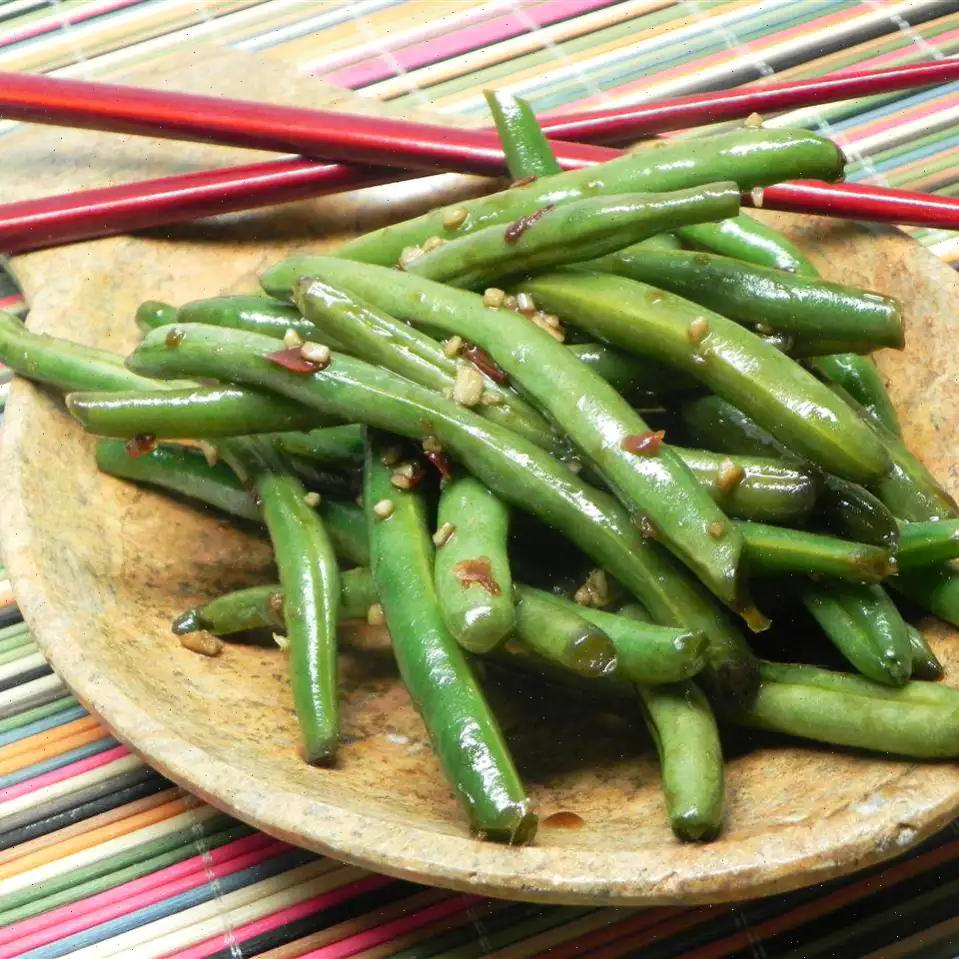
Instant Pot Filipino Chicken Adobo Recipe
Ingredients
This recipe was developed at its original yield. Ingredient amounts are automatically adjusted, but cooking times and steps remain unchanged. Note that not all recipes scale perfectly.
- cup distilled white vinegar
- cup soy sauce
- 2 tablespoons minced garlic
- 1 tablespoon olive oil
- 1 tablespoon brown sugar
- 1 teaspoon black peppercorns, roughly cracked
- 2 bay leaves
- 1 large onion, sliced
- 1 pounds bone-in, skin-on chicken thighs
- 1 tablespoon chopped scallions
Directions
Step 1: In a medium bowl, whisk together vinegar, soy sauce, minced garlic, olive oil, brown sugar, and cracked black peppercorns until the sugar is dissolved. Stir in bay leaves.
Step 2: Line the bottom of a multi-functional pressure cooker (like an Instant Pot) with onion slices. Place the chicken thighs on top of the onions and pour the prepared vinegar mixture over the chicken.
Step 3: Close and lock the lid of the pressure cooker. Set the cooker to high pressure according to the manufacturer's instructions and set the timer for 10 minutes. Allow 10 minutes for the pressure to build.
Step 4: While the chicken is cooking, line a baking sheet with aluminum foil.
Step 5: After 10 minutes, release the pressure using the quick-release method, about 5 minutes. Unlock and remove the lid of the pressure cooker.
Step 6: Using tongs, transfer the chicken thighs to the prepared baking sheet, skin-side up.
Step 7: Select the Saut function on the pressure cooker and cook the sauce until it thickens, about 3 to 5 minutes.
Step 8: Set an oven rack about 6 inches from the heat source and preheat the oven's broiler to high. Place the chicken under the preheated broiler and cook until the skin becomes crispy, about 6 to 8 minutes.
Step 9: Transfer the chicken to a serving plate and spoon the sauce over the top. Garnish with chopped scallions.
Nutrition Facts (per serving)
| Nutrition Fact | Amount | % Daily Value |
|---|---|---|
| Calories | 352 | - |
| Total Fat | 21g | 27% |
| Saturated Fat | 5g | 27% |
| Cholesterol | 106mg | 35% |
| Sodium | 1001mg | 44% |
| Total Carbohydrate | 9g | 3% |
| Dietary Fiber | 1g | 4% |
| Total Sugars | 5g | - |
| Protein | 30g | 60% |
| Vitamin C | 4mg | 4% |
| Calcium | 34mg | 3% |
| Iron | 2mg | 12% |
| Potassium | 363mg | 8% |
* Percent Daily Values are based on a 2,000 calorie diet. Your daily values may be higher or lower depending on your calorie needs.
** Nutrient information is not available for all ingredients. Amount is based on available nutrient data.
(-) Information is not currently available for this nutrient. If you are following a medically restrictive diet, please consult your doctor or registered dietitian before preparing this recipe for personal consumption.
This Instant Pot Filipino Chicken Adobo recipe brings the vibrant flavors of the Philippines straight to your kitchen. With the combination of savory soy sauce, tangy vinegar, and the aromatic essence of garlic, this dish is a beloved Filipino classic that can now be made quickly and easily using your Instant Pot. It's a perfect choice for a weeknight meal with a rich history and cultural significance.
History and Origins
The origin of adobo is deeply tied to the Philippines' colonial history. The term "adobo" comes from the Spanish word "adobar," meaning "to marinate" or "to season." However, the dish itself predates Spanish colonization, with indigenous Filipinos using vinegar and salt to preserve meat. The Spanish influence introduced soy sauce and garlic, which are now essential ingredients in adobo. Adobo is considered the unofficial national dish of the Philippines, with each region and family adding their own unique twist.
Regional Variations
Adobo is incredibly versatile and varies from region to region within the Philippines. In some areas, pork is used instead of chicken, while others might add coconut milk or potatoes to the dish. Some versions are spicier, while others lean towards a sweeter flavor profile. The use of vinegar also variessome recipes use cane vinegar, while others might opt for white vinegar or even coconut vinegar. Despite these variations, the essence of adobo remains the same: a balance of salty, sour, and savory flavors.
Differences from Similar Dishes
While adobo shares similarities with other marinated meat dishes, such as the Spanish "pimentn" or the Cuban "lechn asado," it stands out due to its unique combination of vinegar, soy sauce, and aromatics. Unlike stews or braised dishes that may have a thick sauce, adobo often has a thinner, tangy broth that is usually served with rice. Another key difference is the cooking methodadobo is typically simmered slowly to allow the meat to absorb the marinade, though this Instant Pot version significantly speeds up the process without compromising flavor.
Where Its Served
Adobo is a staple in Filipino households, often served as the main dish at family meals, celebrations, and gatherings. It is typically enjoyed with steamed rice, which soaks up the flavorful sauce. Adobo can also be found in Filipino restaurants and is a must-try dish for anyone exploring Filipino cuisine. While it is most commonly eaten at home, some restaurants offer a variety of adobo options, such as adobo with pork or beef, allowing diners to experience the versatility of the dish.
Interesting Facts
- Adobo was originally a preservation method. The vinegar and soy sauce helped to extend the shelf life of meat in the tropical climate of the Philippines.
- It is said that the best adobo is made by cooking it the day before, allowing the flavors to meld overnight.
- There are more than 100 different regional variations of adobo across the Philippines, each one unique to the local culture and ingredients available.
- In some regions, adobo is considered a comfort food and is even eaten for breakfast, paired with fried rice and eggs.
Conclusion
Instant Pot Filipino Chicken Adobo is not just a quick and delicious recipe; its a taste of Filipino history and culture. This modern twist on a traditional dish makes it easier than ever to prepare a flavorful, aromatic meal that will transport you straight to the heart of the Philippines. Whether youre new to Filipino cuisine or a long-time fan, this adobo recipe is sure to become a favorite in your kitchen.
FAQ about Instant Pot Filipino Chicken Adobo Recipe
Comments
Victoria Jones
03/01/2024 10:30:23 AM
So convenient! The Ninja has made cooking a breeze with its air crisp mode, allowing me to do everything in just one pot!
Mary Thomas
08/02/2023 08:26:40 PM
This recipe was fantastic and simple to make. Next time, I won't add brown sugar as it wasn't necessary. Broiling the chicken was excellent, but placing the sauce directly on top made it lose its crispiness, so next time I'll layer rice, pour in the broth, and then place the chicken on top.
Patrick Baker
07/18/2023 11:55:58 AM
I have to say, this recipe won over my usually choosy husband! The chicken turned out incredibly juicy, even though I broiled it for just 5 minutes. I stuck to the recipe mostly, just adjusted the black pepper to 3/4 of the amount, opted for 3 chicken thighs, and broiled them for 5 minutes.
Eric Williams
11/25/2024 03:11:15 AM
Fantastic recipe, simple and incredibly tasty!
Emily Thomas
08/22/2024 04:52:09 AM
I followed a traditional adobo recipe taught by Filipino Carmelite nuns from our parish. Sorry, Sr. Stella, but this turned out amazing! The best part was definitely crisping the skin under the broiler. I made a few tweaks to the recipe - added an extra 1/4 cup of liquid to avoid any burn warnings (perhaps a bit overly cautious, but those alerts can be bothersome) and used a teaspoon of cornstarch to thicken the sauce at the end. If you're looking for a delicious adobo dish made in no time, this recipe is a winner!








